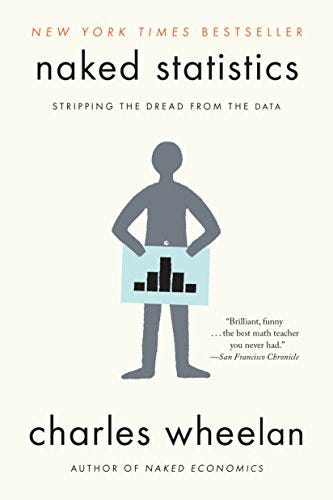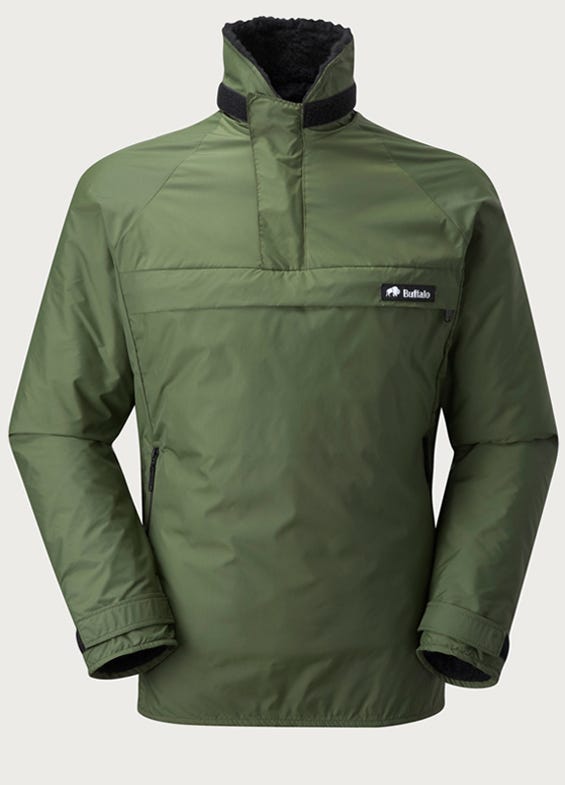20 - Worthy of Your Attention; Week 46 2020
Gilliam-esque films, Arnalds, Statistics, Mountain Shirts.
Hello! You are reading Worthy of Your Attention, a newsletter very broadly about films, music, books and products that might otherwise pass you by. Because you know, there’s a lot going on in life.
Watch
Films are innately self-referential. The most influential establish themes, tropes or a visual aesthetic which can be seen in many movies that follow.
Think of the way that the themes and style of Fritz Lang’s Metropolis can be seen in countless subsequent sci-fi pictures. The gritty rain-drenched future dystopia of Bladerunner (itself drawing on aspects of Metropolis) has, in turn, proved widely influential.
Or the way that echoes of All Quiet on the Western Front, made back in 1930, can be seen in most contemporary war movies like Apocalypse Now, Platoon and Kubrick’s Full Metal Jacket.
This week we’re going to look at one of my all-time favourites, Terry Gilliam’s Brazil, and two other excellent films that draw heavily on its themes and style.
Brazil, Terry Gilliam (1985)
I ran into Terry Gilliam in the mid-1990s at Nice airport. And when I say “ran into”, I mean literally. I had lingered over one too many Pastis in the airport bar and was dashing to catch a delayed flight home. He apologised profusely despite it being entirely my fault and graciously signed a crumpled boarding card which I promptly lost. They do say never collide with your heroes whilst half-cut in foreign transit lounges. Or is it meet? I can never remember.
Nearly every review of Gilliam’s Magnum Opus, Brazil, describes the story as “futuristic” or “Orwellian.” Most call it both. The comparisons are understandable, if inaccurate. The story is Orwellian, in the sense that it is set in a totalitarian state where individuality is smothered by enforced conformity. But where George Orwell, writing in 1948, was envisioning a future ruled by fascism and technology, Gilliam was satirising the bureaucratic, largely dysfunctional industrial world that had been driving him crazy all his life.
The inspiration for Brazil, as Gilliam explains it, came from several intersecting ideas, all of them having to do with the craziness of our awkwardly ordered society and the desire to escape it through whatever means possible.
The film’s hero, Sam Lowry (brilliantly portrayed by Jonathan Pryce), is an unambitious, mid-level bureaucrat trying to stay out of trouble while being haunted by recurring dreams of a beautiful woman beckoning to him, and a metallic, flame-spouting samurai attempting to squash him.
Gilliam’s busy imagination is not to all tastes, and the kaleidoscope of images melding real and unreal worlds was seen as an assault on the senses by some viewers who complained that the movie didn’t know where to end.
Despite a troubled release, Brazil is now widely regarded as one of the most original and influential movies of the past fifty years. In a Time magazine piece celebrating Gilliam’s ultimate success in getting his version of the film to cinema audiences after a drawn-out battle with the studio, critic Richard Corliss spoke for many when he wrote:
A terrific movie has escaped the asylum without a lobotomy. The good guys, the few directors itching to make films away from the assembly line, won one for a change.
Brazil is currently available to stream on Amazon Prime Video.
The City of Lost Children, Jean-Pierre Jeunet and Marc Caro's (1995)
Marc Caro and Jean-Pierre Jeunet's cult classic The City of Lost Children is immediately and self-evidently inspired by Brazil (Gilliam presented Jeunet's and Caro's previous film Delicatessen in North America).
Caro and Jeunet’s strange homage is its own inventive blend of a fairy tale with steampunk stylings. It doesn’t quite hold together but is nevertheless a treat to behold. Set in a decaying waterfront populated by runaway children and grotesque adults, the film follows carnival strongman One (Ron Perlman) and his young companion Miette (Judith Vittet) as they search for One’s kidnapped brother. They are pursued by Krank (Daniel Emilfork), a rapidly ageing mad scientist who has been kidnapping children and stealing their dreams.
French fashion designer Jean-Paul Gaultier provides eye-catching costumes that match the voluptuously decadent aesthetic of the sets. Frequent David Lynch collaborator Angelo Badalamenti laces the film with an atmospheric score. Yet for all its visual splendour and rampant imagination, the film never fully manages to coalesce. It remains as it begins – a haunting dream.
https://www.justwatch.com/uk/movie/the-city-of-lost-children
Dark City, Alex Proyas (1998)
The Matrix was released one year after Dark City and was also filmed at Fox Studios in Sydney using some of the same sets. Whilst comparisons have been made between the movies, for me, Dark City owes more to Gilliam than the Wachowskis.
Fritz Lang's 1927 movie Metropolis was clearly also a major influence on the film, showing through the architecture, concepts of the baseness of humans within a metropolis, and general tone.
When Christopher Nolan first started thinking about writing the script for Inception, he stated that he was influenced by "that era of movies where you had The Matrix, you had Dark City, you had The Thirteenth Floor and, to a certain extent, you had Memento, too. They were based on the principles that the world around you might not be real.”
Proyas gives us nightmare sci-fi film noir, ostensibly complex but rather simple underneath (don’t dig too far) and always sumptuousness for the eyes.
https://www.justwatch.com/uk/movie/dark-city
Listen
Ólafur Arnalds is an Icelandic multi-instrumentalist and producer. He mixes strings and piano with loops and beats, creating majestic soundscapes that often evoke the landscape of that magical island.
After the global stress of the last few weeks, his new long-player Some Kind of Peace might be just the sort of thing we all need to wind down a bit.
The album is serene and peaceful, building on the types of ambient sounds he has put out over the past two decades. Some Kind of Peace features inspired collaborations with Josin, JFDR and the pick of the lot, Bonobo. Together they nurture a gentle, warbling piano and synth composition that slowly builds like something being woven carefully and methodically. A musical scarf on a chilly Autumn night if you will.
Read
Modern life bombards us with data. Often we are ill-equipped to parse this torrent of information. Naked Statistics, by Charles Wheelan, sets out to provide a basic toolset that we can all use to our advantage.
The book reads as an interesting, example-packed, and inviting discussion of the main concepts in statistical analysis. The list of topics is slightly daunting and includes sampling and data collection techniques, experimental design, descriptive statistics, correlation, regression analysis, basic probability, inferential statistics, polling, confidence intervals and margin of error, and the Central Limit Theorem.
If the topics sound a touch dry for the casual reader, the treatment is far from traditional, and Wheelan does a fine job finding easily understood and interesting examples to illustrate fundamental concepts.
From batting averages and political polls to game shows and medical research, the real-world applications of statistics continue to grow by leaps and bounds. Wheelan strips away the superfluous and expresses the underlying beauty of the subject in a way that everyone can appreciate. The right data and a few well-chosen statistical tools can help us in answering many questions of practical life.
Naked Statistics: Stripping the Dread from Data, Charles Wheelan
See also
How to Lie with Statistics, Darrell Huff (Penguin)
Buy
Some readers of this newsletter know me better as the author of a guidebook to Scotland’s epic Cape Wrath Trail (shameless plug - there’s a new edition out in January).
I often get asked for advice about what clothes to take on such an arduous expedition where balancing weight and function is an important decision. My year-round motto is “go prepared for winter and treat anything else as a bonus.” Although slightly facetious, the advice is grounded in seriousness.
And of all my gear it’s the Buffalo Mountain Shirt that gets packed for everything but short expeditions in fine weather. The Mountain Shirt is a classic all-in-one layer for throwing on and leaving on, from crisp Autumn walks to cold, damp and downright nasty winter climbs.
The outer fabric is wind and weatherproof and the thick fleece keeps you warm even when damp and rapidly wicks sweat away. This is a godsend in claggy, cold and damp weather, where keeping comfortable and warm can be a major challenge – even with a vast arsenal of outdoor layers. This one layer pretty much does it all.
It’s a utilitarian garment by design, but in recent years the Mountain Shirt has become available for women and now even comes in purple.
I can scarcely imagine a trip to Scotland or other wet, mountainous regions when you won’t be thankful for the Mountain Shirt as you’re slogging away in extreme cold and damp. And some great news if you’re on a budget - UK brand Alpkit will shortly be releasing their take on the Mountain Shirt for a slightly keener price.
Buffalo Systems Mountain Shirt
That’s it for another fortnight. Take Care - Iain






